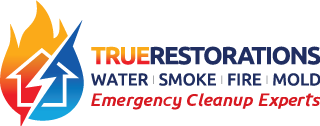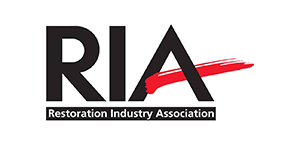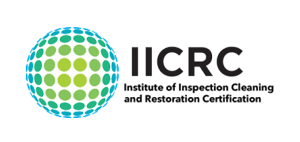Water damage can wreak havoc on your property and lead to significant financial and emotional stress. To effectively manage and control water damage, it’s important to avoid certain mistakes that can worsen the situation. In this article, we will outline crucial steps to avoid when facing water damage, ensuring that you can protect your property and minimize the impact of this unfortunate event.
Key Takeaways:
- Ignoring the source of water intrusion can lead to further damage and risks.
- Delaying water extraction and drying can result in structural damage and mold growth.
- Neglecting proper documentation and insurance claims can hinder compensation.
- Attempting DIY water damage restoration without professional help may lead to costly mistakes.
- Ignoring mold remediation can have severe health implications and property damage.
Ignoring the Source of Water Intrusion
When facing water damage, one of the gravest mistakes you can make is ignoring the source of water intrusion. It is imperative to identify and address the root cause of the leak or flooding to prevent further damage and mitigate risks.
Water intrusion can occur due to various reasons, such as a burst pipe, roof leak, or faulty plumbing. By disregarding the source, you not only allow the water damage to persist but also increase the likelihood of recurring issues.
To effectively address water intrusion, you need to conduct a thorough investigation to pinpoint the exact source. This may involve inspecting visible signs of damage, examining the surrounding areas, or even seeking professional assistance to detect hidden leaks or seepage.
Once you identify the source of water intrusion, it is crucial to take immediate action to rectify the problem. This may include repairing the damaged pipe, sealing gaps or cracks, or replacing faulty plumbing fixtures.
By promptly addressing the source of water intrusion, you can prevent further water damage, safeguard your property, and avoid costly repairs in the future.
| Source | Description |
|---|---|
| Roof leaks | Damage to the roof, missing shingles, or clogged gutters can lead to water seepage into the structure. |
| Plumbing issues | Burst pipes, leaky faucets, or faulty plumbing connections can cause water damage indoors. |
| Flooding | Natural disasters, heavy rain, or inadequate drainage systems can result in significant water intrusion. |
| Foundation cracks | Structural issues, such as cracks or gaps in the foundation, can allow water to enter the property. |
Identifying and addressing the source of water intrusion is a critical step in mitigating water damage and maintaining the integrity of your property. By taking immediate action and seeking professional help when needed, you can minimize the extent of the damage and protect the value of your investment.
Delaying Water Extraction and Drying
When faced with water damage, one of the biggest mistakes you can make is delaying the process of water extraction and drying. Acting quickly to remove the water and initiate the drying process is crucial to minimize the extent of damage and prevent further issues down the line.
Delaying water extraction and drying can lead to significant damage to your property. As water lingers, it seeps into various surfaces, causing structural weakening, warping, and potential mold growth. Mold thrives in moist environments, and a delay in addressing water damage can create the perfect conditions for mold to proliferate.
To prevent these serious consequences, it is imperative to act swiftly. Begin by removing any standing water using appropriate equipment such as pumps, wet vacuums, or water extraction services. This step helps eliminate excess moisture, protecting your property from further deterioration.
After the water extraction, thorough drying becomes paramount. Utilize powerful fans, dehumidifiers, and air movers to dry out affected areas effectively. This process aims to reduce moisture and eliminate the ideal environment for mold, ultimately safeguarding your property’s integrity.
Remember, time is of the essence when it comes to water extraction and drying. Acting promptly can not only mitigate damage but also reduce the overall cost of water damage restoration.
Tips to expedite the water extraction and drying process:
- Ensure your safety by wearing protective clothing and gear before starting the water extraction and drying process.
- Use specialized equipment, such as moisture meters, to accurately assess moisture levels in walls, floors, and other affected surfaces.
- Remove furniture, carpets, and other belongings from the affected area to facilitate thorough drying.
- Open windows and doors to increase ventilation and promote air circulation.
- Dispose of any unsalvageable items properly and safely to prevent further contamination.
List of potential damages caused by delayed water extraction and drying:
| Damage | Impact |
|---|---|
| Structural weakening | Compromised integrity and safety hazards. |
| Mold growth | Health risks, further damage to property, and costly mold remediation. |
| Warping and swelling of materials | Damaged floors, walls, and furniture. |
| Odor buildup | Unpleasant smells that are difficult to eliminate. |
| Electrical hazards | Risk of electrocution or fire due to water exposure. |
Neglecting Proper Documentations and Insurance Claims
Neglecting proper documentation and insurance claims can hinder your ability to receive compensation for water damage. When faced with water damage, it is essential to take immediate action to protect your property and ensure a smooth claims process.
To increase your chances of a successful insurance claim, follow these important steps:
- Document the Damage: Take detailed photos and videos of the affected areas, capturing the extent of the water damage. Make sure to focus on any valuables, furniture, and structural damages. These visual records will serve as crucial evidence during the claims process.
- Take Detailed Notes: Take the time to jot down written descriptions of the water damage, including dates, times, and any relevant details. Make note of any pre-existing damage that may impact your claim. The more detailed and accurate your notes, the better positioned you will be to receive appropriate compensation.
- Contact Your Insurance Provider: Notify your insurance company as soon as possible. Provide them with all the documentation and evidence you have collected, including the photos, videos, and notes. They will guide you through the claims process and help you understand what is covered under your policy.
Remember, timely reporting and documentation are vital to ensure a smooth insurance claims process. Failing to document the damage and neglecting to file a claim promptly can result in delays or even denial of compensation.
Attempting DIY Water Damage Restoration Without Professional Help
When faced with water damage in your home, it may be tempting to tackle the restoration process on your own. However, attempting DIY water damage restoration without professional help can lead to costly mistakes and inadequate restoration results.
Water damage restoration is a complex and intricate process that requires specialized knowledge, equipment, and experience. Without the proper expertise, you may underestimate the extent of the damage or overlook hidden moisture pockets, which can result in long-term structural issues and potential health risks.
By hiring a qualified water damage restoration company, you can benefit from their years of experience and technical skills. These professionals have the expertise to identify the full extent of the damage, determine the most effective restoration methods, and ensure thorough drying to prevent mold growth.
Additionally, professional water damage restoration companies have access to advanced equipment and technology that allows them to extract water efficiently, dry affected areas thoroughly, and monitor moisture levels to prevent further damage.
Moreover, DIY restoration efforts may not be covered by insurance if not done correctly, leaving you with the financial burden of repairs and replacements. On the other hand, professional restoration companies can assist you in documenting the damage and filing insurance claims, increasing your chances of receiving the compensation you deserve.
Remember, when it comes to water damage restoration, it’s best to leave it to the experts. Their knowledge, skills, and resources will ensure effective restoration and minimize the risk of additional problems down the line.
Benefits of Hiring a Professional Water Damage Restoration Company
| Benefits | Explanation |
|---|---|
| Expertise | Qualified professionals with specialized knowledge in water damage restoration. |
| Advanced Equipment | Access to specialized tools and technology for efficient water extraction and drying. |
| Thorough Restoration | Experience in identifying hidden moisture and ensuring complete drying. |
| Prevention of Mold Growth | Knowledge and techniques to mitigate the risk of mold growth after water damage. |
| Insurance Claims Assistance | Guidance in documenting the damage and filing insurance claims for proper compensation. |
Neglecting Mold Remediation
After experiencing water damage, neglecting mold remediation can have severe consequences for both your health and your property. Mold has the potential to grow rapidly in moist environments, posing health risks and causing further damage if left unaddressed.
Mold thrives in areas with excess moisture, such as damp walls, floors, or ceilings, creating an ideal breeding ground for its growth. It can spread through airborne spores and release harmful substances, triggering allergic reactions, respiratory problems, and even more serious health conditions.
Addressing any signs of mold growth promptly is crucial to prevent its proliferation and minimize its impact on your property and your well-being. Mold growth is often visible as discolored patches or fuzzy growth on surfaces but can also hide behind walls, underneath carpets, or in areas with poor ventilation.
When facing water damage, it is essential to seek professional assistance for mold remediation. Professionals have the expertise, equipment, and knowledge to effectively identify and eliminate mold, ensuring that it is completely eradicated from your property.
Professional mold remediation often involves the following steps:
- Inspection and assessment of the affected areas to determine the extent of the mold growth.
- Containment of the contaminated areas to prevent the spread of mold spores during the remediation process.
- Safe removal and disposal of mold-infested materials, following industry best practices to minimize cross-contamination.
- Thorough cleaning and disinfection of the affected areas to eliminate any remaining mold spores.
- Drying and dehumidification to remove excess moisture and prevent future mold growth.
- Post-remediation inspection to ensure that the mold has been successfully eradicated and to verify the effectiveness of the remediation process.
In addition to addressing mold growth, it is important to identify and rectify the source of water intrusion to prevent future mold problems. By eliminating the source of moisture, you can create an environment that is inhospitable to mold growth.
Remember, neglecting mold remediation can lead to further property damage and jeopardize your health. Take immediate action when detecting signs of mold growth and consult with a professional mold remediation specialist to safeguard your property and well-being.
Disregarding Electrical Safety Concerns
When faced with water damage, it is essential not to disregard electrical safety concerns. Failure to address these concerns can result in serious electrical hazards and even fires. To protect yourself and your property, follow these important steps:
- Shut off the main power supply: If there is standing water or a risk of electrical contact, immediately turn off the main power supply to prevent electrical accidents. This step is crucial for your safety and the safety of those around you.
- Consult with a qualified electrician: Before restoring power to your property after water damage, it is imperative to consult with a qualified electrician. They will assess the situation, identify any potential electrical issues, and provide guidance on how to safely proceed.
By taking these precautions and involving a professional, you can avoid electrical hazards and ensure a safer restoration process.
Conclusion
Protecting your property from water damage requires quick action, meticulous attention to detail, and professional assistance when necessary. By avoiding these common mistakes, you can effectively manage water damage and minimize its impact on your property and well-being. Remember, time is of the essence, so act swiftly to mitigate the damage.
Documenting the extent of the damage is crucial for insurance purposes. Take clear photos and videos of the affected areas, and make detailed notes of the damages incurred. This documentation will help support your insurance claim and increase your chances of receiving proper compensation.
When it comes to water damage restoration, it’s essential to leave it to the professionals. Without the necessary expertise and specialized equipment, attempting DIY restoration can lead to costly mistakes and inadequate results. Instead, hire a qualified water damage restoration company that can efficiently restore your property and ensure thorough remediation.
In addition to the visible damage, be vigilant about potential mold growth. Mold can thrive in damp environments, and untreated mold can cause health issues and further damage to your property. If you notice signs of mold, such as a musty odor or visible growth, seek professional assistance promptly to address the issue and prevent its spread.
FAQ
What are the crucial steps to avoid when facing water damage?
It is crucial to avoid ignoring the source of water intrusion, delaying water extraction and drying, neglecting proper documentation and insurance claims, attempting DIY water damage restoration without professional help, neglecting mold remediation, disregarding electrical safety concerns.
Why is it important to address the source of water intrusion?
Identifying and addressing the source of water intrusion is essential to prevent further damage and mitigate risks associated with water damage.
Why is it crucial to act quickly with water extraction and drying?
Delaying water extraction and drying can lead to extensive damage to your property, including structural damage, mold growth, and further deterioration.
How can neglecting proper documentation and insurance claims hinder compensation?
Neglecting proper documentation and insurance claims can hinder your ability to receive compensation for water damage. It is important to take photos, videos, and detailed notes of the damage and contact your insurance provider promptly for guidance.
Why is it not recommended to attempt DIY water damage restoration without professional help?
Attempting to restore water damage on your own without professional help can lead to costly mistakes and inadequate restoration. It is best to hire a qualified water damage restoration company with the expertise, equipment, and experience to handle the situation properly.
Why is neglecting mold remediation after water damage a concern?
Neglecting mold remediation after water damage can have severe health implications and cause further damage to your property. Mold can grow rapidly in moist environments, so it is important to address any signs of mold growth promptly and seek professional assistance.
What are the risks of disregarding electrical safety concerns during water damage situations?
Disregarding electrical safety concerns during water damage situations can lead to electrical hazards and even fires. It is crucial to shut off the main power supply if there is standing water or a risk of electrical contact and consult with a qualified electrician before restoring power.

























